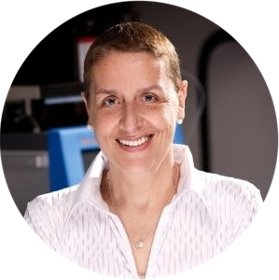It’s generally accepted that not all patients respond the same way to a given therapy. This makes a lot of sense because we’re all different. However, what’s less understood, is how each individual lesion within our body responds differently to a specific therapy. With access to better tools, we’re able to capture more information with less invasive techniques in order to visualize what’s truly happening inside a patient as they undergo treatment.
What we’re discovering, is that there is typically not a single response playbook for different sites of the body. This concept of intra-patient heterogeneity is counterintuitive to how we think about individuals responding to therapy today. Let’s take a cancer patient as an example. When an individual undergoes systematic therapy, response to that therapy is typically classified within one of two buckets. “Progressing” (getting worse) or “Responding” (getting better). These terms can be somewhat misleading. As we continue to learn more about intra-patient heterogeneity, we find that lesions within a patient can be both “Progressing” and “Responding” at the same time. So how can this be?
This “double” classification is due to how we currently collect and classify data that measures treatment response. A good example of this is within patients with metastatic cancer. When a patient undergoes therapy, their radiological scans are evaluated by a radiologist who measures and documents lesions from those scans. This process is manual and only requires between 3-5 target lesions to be measured and documented to formulate a classification of Progressing or Responding. The issue with this is that many patients develop more than 3-5 lesions. If those additional non-target lesions aren’t counted or even included in the analysis, it becomes difficult to understand the full picture of a patient’s response to a treatment. This lack of information in turn, leaves treating physicians and clinical study principal investigators using their best judgement rather than comprehensive concrete data to identify a patient’s true response to the therapy.
Research from the University of Wisconsin has discovered that as little as 5% of lesions that are not responding to treatment drive the overall treatment effectiveness. Therefore, it is crucial to accurately quantify total disease burden based on the assessment of every individual lesion. AIQ provides the software tool critically needed to do this. AIQ’s software technologies captures every lesion from a patient’s radiological scans using artificial intelligence and machine learning and then compares the lesion’s response to treatment over time to delivers an accurate response classification to healthcare providers and principal investigators. This “actionable intelligence” is used to understand disease burden and identify responding and non-responding lesions leading to the optimal management of care.
Identifying and collecting information on all lesions is important so that the appropriate next steps can be put in place to maximize the opportunity for the best outcome for that individual patient. This can take the form of pivoting to a different treatment plan, maintaining the same treatment, adding another treatment, or discontinuing unnecessary treatment all together.
AIQ’s response assessment methodology is a large departure from the traditional response methods typically used today. Software that provides more information through artificial intelligence is crucial to support and grow as technology continues to play a larger role in patient care and the medical field as a whole. By using medical device software like the one AIQ has developed, more comprehensive data sets will provide the medical community a greater understanding of the broader clinical picture, leading to more individualized treatment plans, more efficient drug development, and better outcomes for patients.



